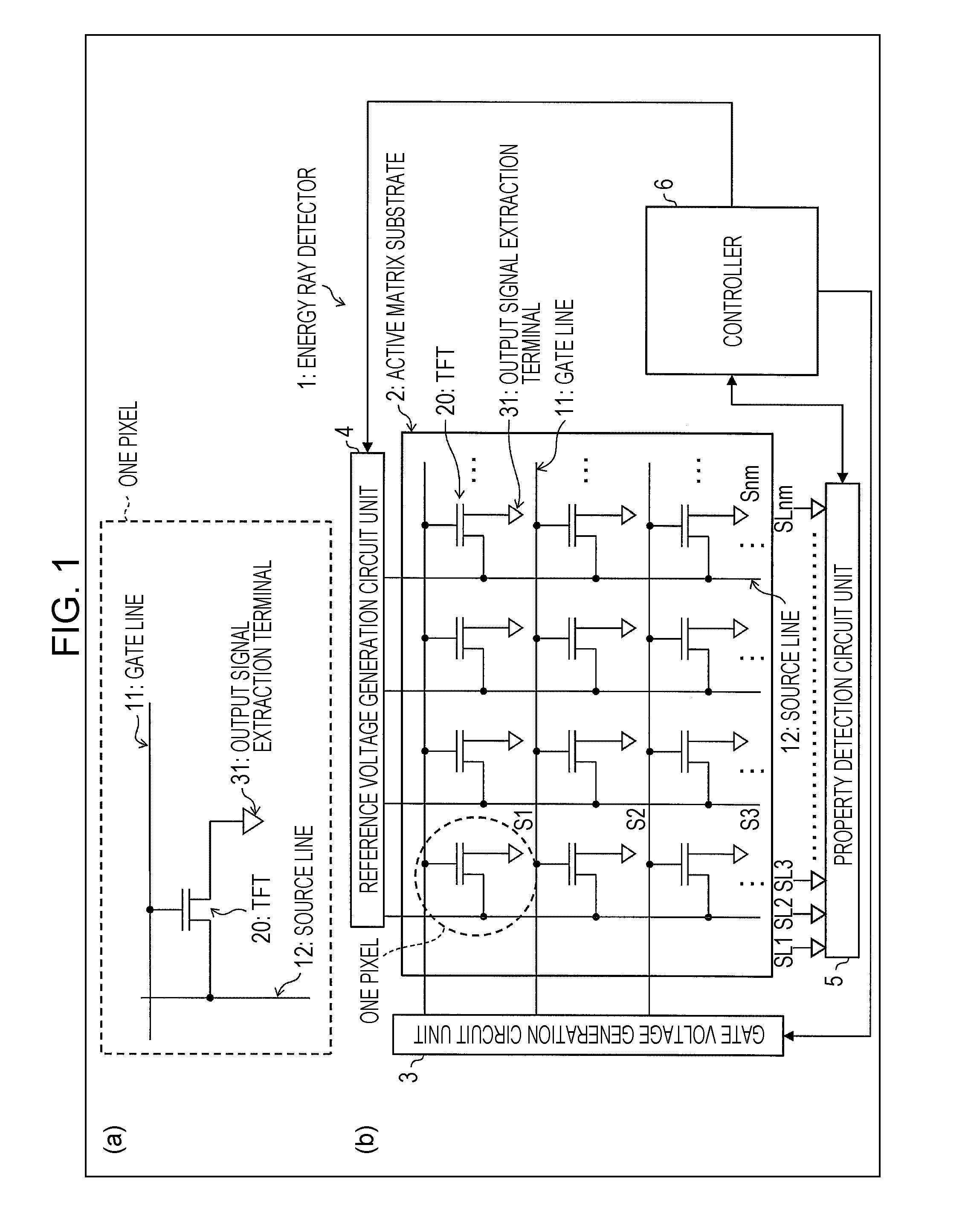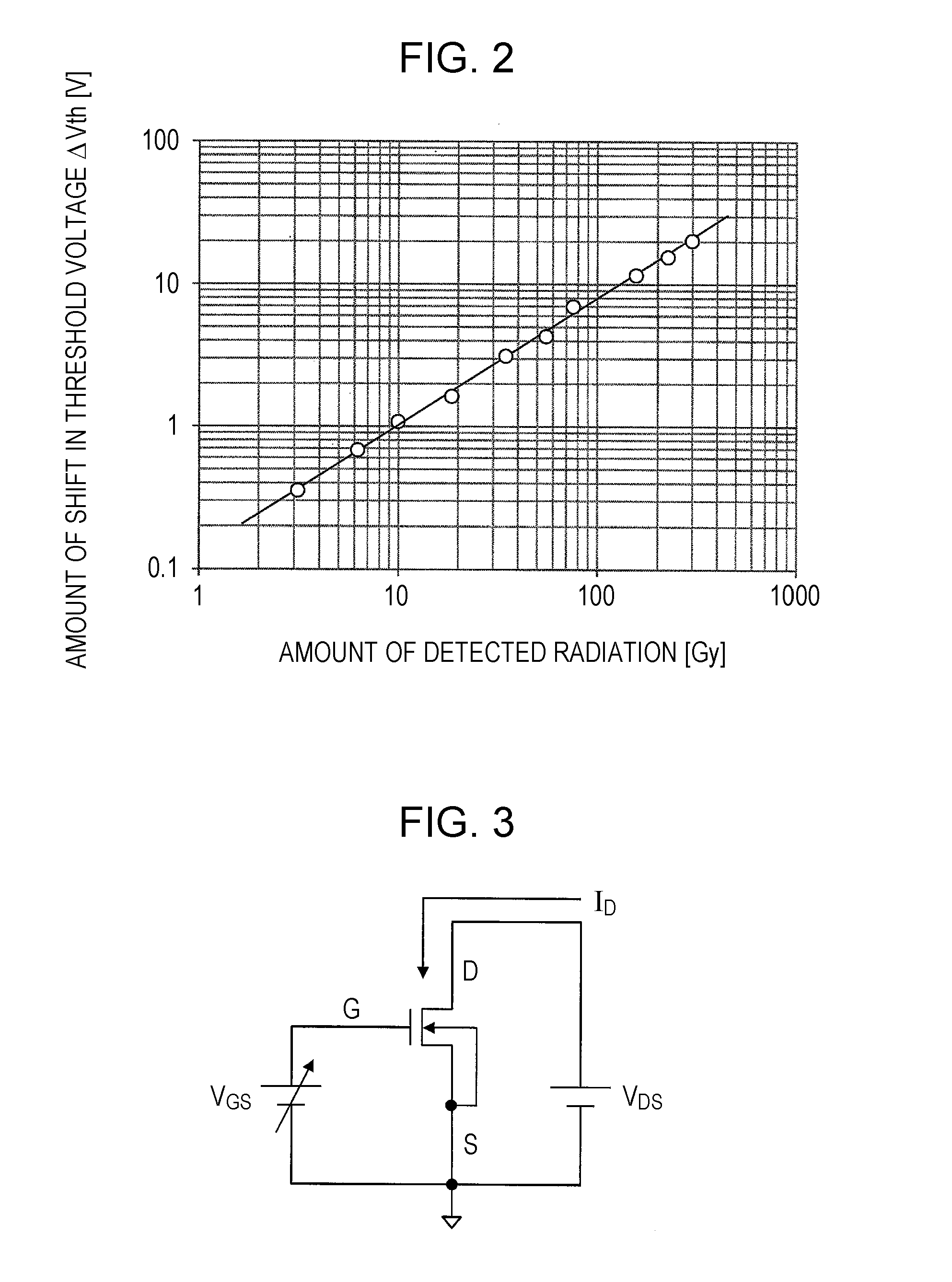Energy ray detector
- Summary
- Abstract
- Description
- Claims
- Application Information
AI Technical Summary
Benefits of technology
Problems solved by technology
Method used
Image
Examples
first embodiment
[0095]One embodiment of the present invention is described below with reference to FIGS. 1(a) and 1(b) to FIG. 8.
[0096]1>
[0097]First, an example of the overall configuration of an energy ray detector according to the this embodiment using a TFT as the transistor illustrated in FIG. 3 having the gate voltage-drain current property illustrated in FIG. 5 is described.
[0098]FIG. 1(a) is a circuit diagram illustrating a basic circuit configuration of one pixel in an energy ray detector 1 according to this embodiment, and FIG. 1(b) is a block diagram illustrating an example of the overall configuration of the energy ray detector 1 according to this embodiment.
[0099]As illustrated in FIG. 1(b), the energy ray detector 1 according to this embodiment includes an active matrix substrate 2, a gate voltage generation circuit unit 3 and a reference voltage generation circuit unit 4 that function as a drive circuit, a property detection circuit unit 5, and a controller 6.
[0100]These constituent e...
second embodiment
[0204]Another embodiment of the present invention is described below with reference to FIGS. 9(a) and 9(b). In this embodiment, differences from the first embodiment are described. Constituent elements having the same functions as the constituent elements used in the first embodiment are given the same reference numerals, and description thereof is omitted.
[0205]Also in this embodiment, the basic idea and the principle of energy ray detection in terms of the overview of the invention are the same as in the first embodiment.
[0206]In the first embodiment, the case is described, for example, where the radiation dose is detected from the electric current that increases when the TFT 20 of each pixel Sx is turned on. In this embodiment, a case is described, for example, where the radiation dose is detected from the electric current that increases when the TFT 20 that has been turned off transitions to the on state in accordance with a change in the threshold in response to application of ...
third embodiment
[0233]Yet another embodiment of the present invention is described below with reference to FIGS. 10(a) and 10(b). Here, differences between this embodiment and the first and second embodiments are described. Constituent elements having the same functions as the constituent elements used in the first and second embodiments are given the same reference numerals, and description thereof is omitted.
[0234]In a capacitor element formed by using a transistor that has an active layer formed of a semiconductor, when radiation is applied to the capacitor element, the capacitance value linearly transitions in accordance with the amount of applied radiation.
[0235]Therefore, by detecting, as the amount of change in an electrical property of the semiconductor, the amount of change (amount of transition) in the capacitance value of the capacitor element formed by using the transistor having an active layer formed of a semiconductor, the radiation dose can be determined from the amount of change in...
PUM
 Login to View More
Login to View More Abstract
Description
Claims
Application Information
 Login to View More
Login to View More - R&D
- Intellectual Property
- Life Sciences
- Materials
- Tech Scout
- Unparalleled Data Quality
- Higher Quality Content
- 60% Fewer Hallucinations
Browse by: Latest US Patents, China's latest patents, Technical Efficacy Thesaurus, Application Domain, Technology Topic, Popular Technical Reports.
© 2025 PatSnap. All rights reserved.Legal|Privacy policy|Modern Slavery Act Transparency Statement|Sitemap|About US| Contact US: help@patsnap.com



